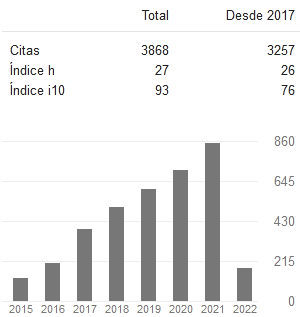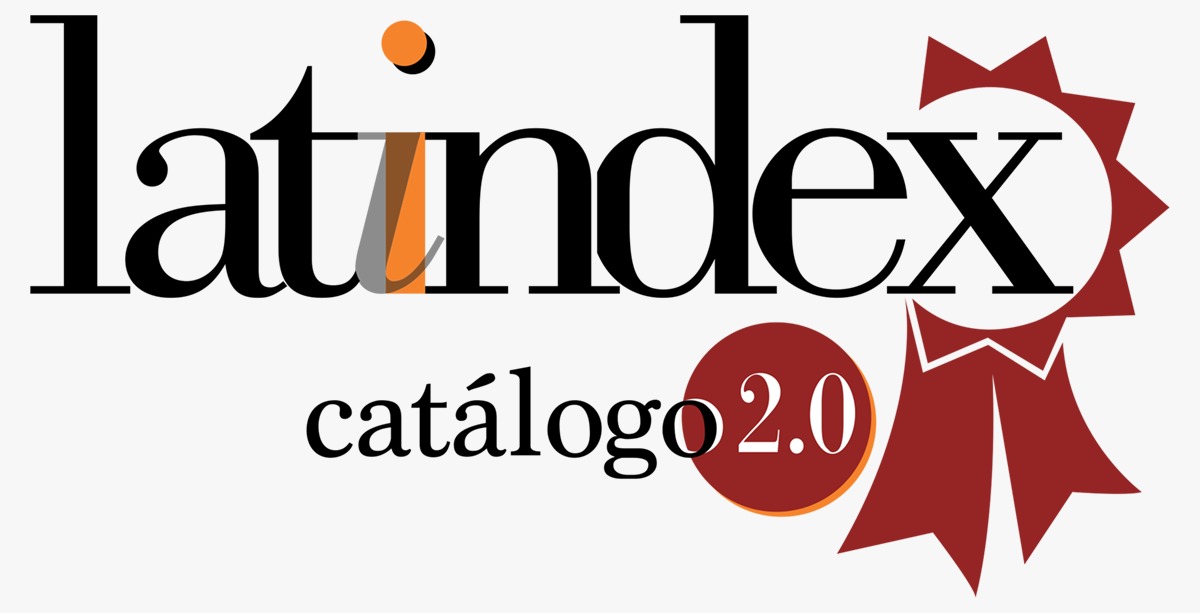OPTIMIZATION OF THE VISUAL WORDS RECOGNITION IN PROCESSES OF TEACHING LEARNING: AN APPROXIMATION FROM THE NEUROSCIENCES
Keywords:
visual word recognition; syllabic boundaries; effect of consonants; text visualization; nonlinear text.Abstract
In this work are suggested some didactic ideas to optimize the Visual Word Recognition in nonlinear text used in visual presentations into the teaching-learning process. Those suggestions are found with referents of neurosciences, like results of experimental neurolinguistic studies related with effects of syllabic boundaries, the effect of the consonants and the early double morphologic and orthographic processing of the words. Moreover, elements of visual perception of color, neural control of contrast in the retina and the formation of visual maps in the visual cortex are considered. The mentioned results have had very little systematization in didactics, judging by the scarcity of publications on that theme. The application of the proposed suggestion allows reducing the time and energy consumption in word recognition, which contributes to enhance the visualization of the information for the communicative interaction teacher-student during the presentation of contents in the lesson.
References
Addine, F. y Col. (1998). Didáctica y optimización del proceso de enseñanza-aprendizaje. La Habana. Cuba. Instituto Pedagógico Latinoamericano y Caribeño.
Alvarez, C.J., Cottrell, D. and Afonso, O. (2009). Writing dictated words and picture names: Syllabic boundaries affect execution in Spanish. Applied Psycholinguistics 30 (2009), 205223, Printed in the United States of America doi:10.1017/S0142716409090092
Andújar, J.R. (2010). Eficacia visual del color en las presentaciones científicas. En IX Congreso Nacional del Color, ALICANTE 2010, Universidad de Alicante. Publicaciones de la Universidad de Alicante ISBN: 978-84-9717-144-1, -PDF.
Argüello, L.A. (2009). El oficio de profesor universitario en la era de los medios electrónicos. RUSC, Rev. De Universidad y Sociedad del Conocimiento, vol. 6 n.º 2 (2009) | ISSN 1698-580x, PDF.
Bamford, A. (2004). The Visual Literacy White Paper. -http://www.adobe.com/uk/education/pdf/adobe-visual-literacy-paper.pdf- 21 junio, 2010.
Beyersmann, E., Coltheart, M., Castles, A. (2012). Parallel processing of whole words and morphemes in visual word recognition. Macquarie University ResearchOnline.
Beyersmann, E., Castles, A. and Coltheart, M. (2012). Morphological processing during visual word recognition in developing readers: evidence from masked priming. Macquarie University ResearchOnline - researchonline.mq.edu.au
Cacioppo, J.T. (2002). Social neuroscience: Understanding the pieces fosters understanding the whole and viceversa. American Psychologist, 57, 819-831.
Caro, E.O. y Monroy, M. (2008). Relación de los ambientes hipertextuales de aprendizaje gráfico y sonoro, con los estilos de aprendizaje verbal y visual. Revista Avances en Sistemas e Informática, Vol.5 No.2, Junio de 2008, Medellín, ISSN 657-7663
Carreiras, M., Andoni, J. y Molinaro, N. (2009). Consonants and Vowels Contribute Differently to Visual Word Recognition: ERPs of Relative Position Priming. Basque Center on Cognition, Brain and Language, Donostia-San Sebastián, Spain.
Carreiras, M., Vergara, M. and Perea, M. (2009). ERP correlates of transposed-letter priming effects: The role of vowels versus consonants. Psychophysiology, 46 (2009), 34–42. Wiley Periodicals, Inc. Printed in the USA. Copyright r 2008 Society for Psychophysiological Research, DOI: 10.1111/j.1469-8986.2008.00725.x
Coleman, J. (2010). Elementary Teachers’ Instructional Practices Involving Graphical Representations. Journal of Visual Literacy, Volume 29, Number 2, 198-222. –PDF. Prop.
Dondis, D.A. (1976). La sintaxis de la imagen. Introducción al alfabeto visual. Barcelona: Gustavo Gili.
Fernández, J.A. (2010). Neurociencias y Enseñanza de la Matemática. Prólogo de algunos retos educativos. Revista Iberoamericana de Educación/ Revista Ibero-americana de Educação. ISSN:1681-5653, n.º 51/3 –25 de enero/Janeiro de 2010
Guyton, A., 2005. Fisiología Médica. Tomo III. La Habana. Ed. E.
Hassan, Y. y Ortega, S. (2007). Informe APEI sobre usabilidad: Edición APEI. ISBN: 978-84-692-3782-3
Lineamientos Sexto Congreso del PCC.
Lupton, E. y Philips, J. (2009). Diseño gráfico: nuevos fundamentos. Barcelona: Gustavo Gili.
March, E. (2011). Tesis Doctoral. Lenguaje Visual y Animación 3D. Propuesta educativa de desarrollo de la alfabetización visual para el disfrute del producto 3D. Valencia. España: Universidad Politécnica de Valencia.
Montoro, P. (2008). Tesis Doctoral. Organización perceptiva y atención: efectos del procesamiento preatencional sobre el funcionamiento de la atención selectiva.
Duarte, N. (2008). “Using visuals elements: Background, Color and Text”. Slide:ology: The Art and Science of Creating Great Presentations. Copyrighted Material. Canada. 2008. Pag. 113-156.
OCDE, (2009). La comprensión del cerebro: el nacimiento de una ciencia del aprendizaje. Santiago de Chile: Ediciones UCSH, Universidad Católica Silva Henríquez. pp: 31-32 En pdf. ISBN: 978-956-7947-92-8.
Prendes, M.P. (1995). ¿Imagen didáctica o didáctica de la imagen? Enseñanza & Teaching, 13, 1-5.
Reynolds, G. (2008). Presentation Zen Design: Simple Design Principles and Techniques to Enhance Your on Presentations. New Riders. United States of America. Pag.10-19.
Santamaría, F. (2006). Representación gráfica del conocimiento: mapas conceptuales y mapas mentales I (la teoría). by Fernando Santamaría on April 1, 2006.
Vergara, M.(2006). Efectos silábicos en el componente P200 durante el procesamiento visual de palabras: un estudio de potenciales relacionados con eventos. Cognitiva, Volume 18, Number 1, February 2006 , pp. 25-41(17) en PDF
Vergara, M, Perea, M, Marín, A and Carreiras, M. (2011). The processing of consonants and vowels during letter identity and letter position assignment in visual-word recognition: An ERP study . Brain & Language 118 (2011) 105–117. Available online 16 October 2010
Van Lange, P.A. (2006). Bridging social psychology: benefits of transdisciplinary approaches. Mahwah, NJ: Lawrence Erlbaum Associates.
Ware, C. (2008). Visual Thinking for Design. Burlington, MA: Morgan Kaufmann. [ISBN 978-0-12370896-0. 197 pages,] –PDF. Prop. Colin Ware offers an overview of the neurophysiological under-pinnings of visual thinking,
Wikipedia, 2012. En Periodismo Visual.
Wigan, M. (2008). Pensar visualmente: lenguaje, ideas y técnicas para el ilustrador. Barcelona: Gustavo Gili.
Wolfe, J. M. and Horowitz, T. S. (2004). What attributes guide the deployment of visual attention and how do they do it?. En: Nature Reviews: Neuroscience, Vol. 5, n. 6, pp. 495-501.
Zapata, M. y Flores, L. (2008). Identificación de estilos de aprendizaje. Rev Estilos de Aprendizaje, N 2, Vol 2. Octubre, 2008. –PDF
Downloads
Published
How to Cite
Conference Proceedings Volume
Section
License
Copyright (c) 2020 Alberto Clemente Fernández, Belisario Tomás Cedeño García, Roberto Fernando Valledor Estevill, Pedro Roberto Valdés Tamayo, Yadira de la Caridad Ávila Aguilera

This work is licensed under a Creative Commons Attribution 4.0 International License.
Usted es libre de:
- Compartir — copiar y redistribuir el material en cualquier medio o formato
- Adaptar — remezclar, transformar y construir a partir del material para cualquier propósito, incluso comercialmente.
Bajo los siguientes términos:
- Atribución — Usted debe dar crédito de manera adecuada, brindar un enlace a la licencia, e indicar si se han realizado cambios. Puede hacerlo en cualquier forma razonable, pero no de forma tal que sugiera que usted o su uso tienen el apoyo de la licenciante.
- No hay restricciones adicionales — No puede aplicar términos legales ni medidas tecnológicas que restrinjan legalmente a otras a hacer cualquier uso permitido por la licencia.














































